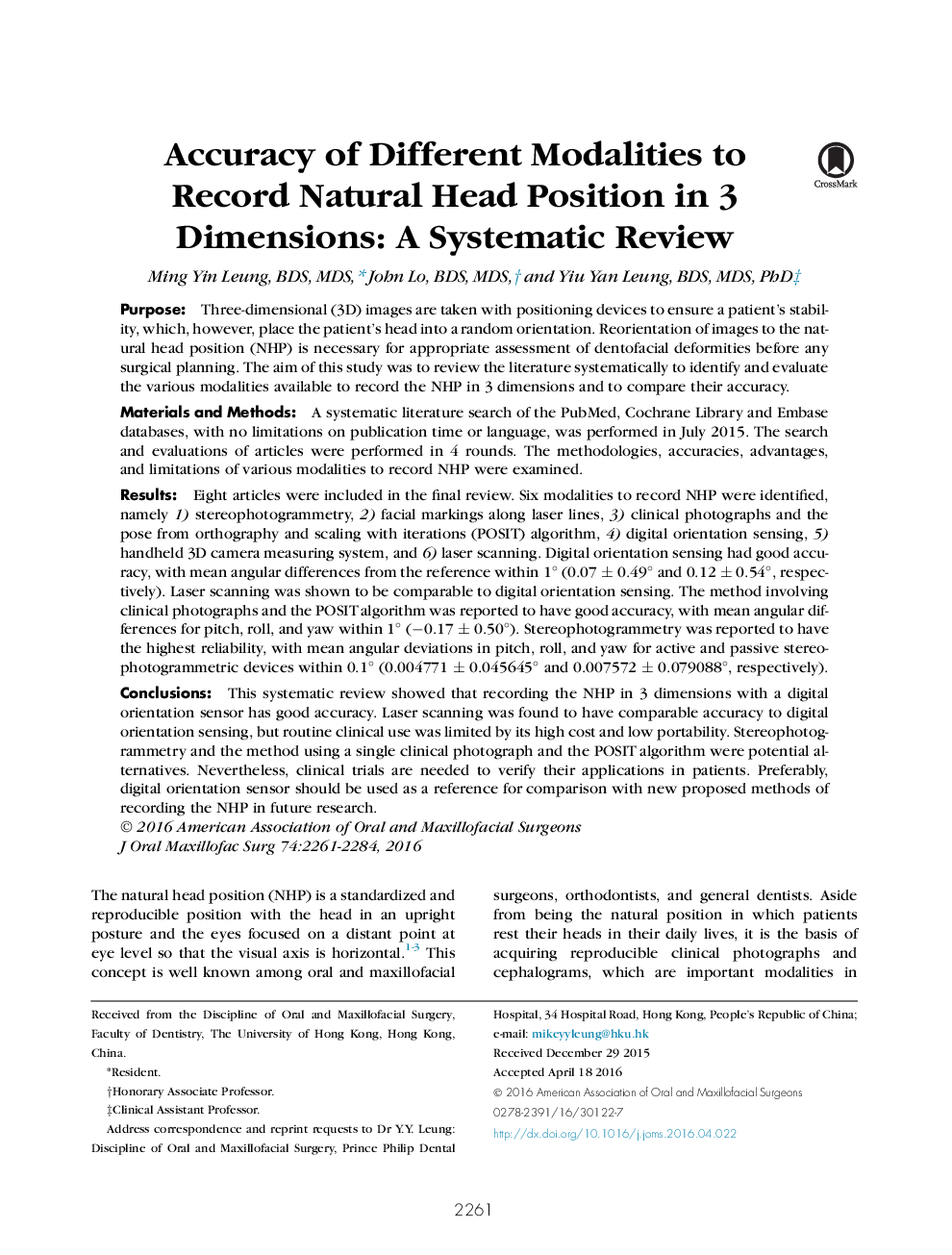| کد مقاله | کد نشریه | سال انتشار | مقاله انگلیسی | نسخه تمام متن |
|---|---|---|---|---|
| 5641895 | 1406870 | 2016 | 24 صفحه PDF | دانلود رایگان |
PurposeThree-dimensional (3D) images are taken with positioning devices to ensure a patient's stability, which, however, place the patient's head into a random orientation. Reorientation of images to the natural head position (NHP) is necessary for appropriate assessment of dentofacial deformities before any surgical planning. The aim of this study was to review the literature systematically to identify and evaluate the various modalities available to record the NHP in 3 dimensions and to compare their accuracy.Materials and MethodsA systematic literature search of the PubMed, Cochrane Library and Embase databases, with no limitations on publication time or language, was performed in July 2015. The search and evaluations of articles were performed in 4 rounds. The methodologies, accuracies, advantages, and limitations of various modalities to record NHP were examined.ResultsEight articles were included in the final review. Six modalities to record NHP were identified, namely 1) stereophotogrammetry, 2) facial markings along laser lines, 3) clinical photographs and the pose from orthography and scaling with iterations (POSIT) algorithm, 4) digital orientation sensing, 5) handheld 3D camera measuring system, and 6) laser scanning. Digital orientation sensing had good accuracy, with mean angular differences from the reference within 1° (0.07 ± 0.49° and 0.12 ± 0.54°, respectively). Laser scanning was shown to be comparable to digital orientation sensing. The method involving clinical photographs and the POSIT algorithm was reported to have good accuracy, with mean angular differences for pitch, roll, and yaw within 1° (â0.17 ± 0.50°). Stereophotogrammetry was reported to have the highest reliability, with mean angular deviations in pitch, roll, and yaw for active and passive stereophotogrammetric devices within 0.1° (0.004771 ± 0.045645° and 0.007572 ± 0.079088°, respectively).ConclusionsThis systematic review showed that recording the NHP in 3 dimensions with a digital orientation sensor has good accuracy. Laser scanning was found to have comparable accuracy to digital orientation sensing, but routine clinical use was limited by its high cost and low portability. Stereophotogrammetry and the method using a single clinical photograph and the POSIT algorithm were potential alternatives. Nevertheless, clinical trials are needed to verify their applications in patients. Preferably, digital orientation sensor should be used as a reference for comparison with new proposed methods of recording the NHP in future research.
Journal: Journal of Oral and Maxillofacial Surgery - Volume 74, Issue 11, November 2016, Pages 2261-2284
